Writers, do you want to know which parts of the article readers resonate with?

Have you ever wondered which parts of your articles your readers resonate with the most? As a writer, one of the most fulfilling experiences is knowing that your work has impacted your audience in a meaningful way. However, identifying which parts of your writing truly connect with your readers can often feel like a guessing game. This article aims to guide you on the path to better understand your audience's resonance and importance.
Understanding Reader Resonance
Firstly, let's understand what it means for a reader to resonate with a piece of writing. Reader resonance occurs when a part of your article strikes a chord with your audience. It could be a shared experience, an emotion, a thought-provoking insight, or even a beautifully constructed sentence that readers find particularly impactful.
Methods for Unveiling Reader Resonance
To discern what parts of your work resonate most with readers, it's crucial to use a combination of direct and indirect feedback mechanisms.
Ask users directly
As you can think of, one of the most straightforward methods of understanding reader resonance is through direct communication. This may be a bit daunting at first, especially for writers who are more accustomed to one-way communication, but the rewards are invaluable.
To achieve this, you can ask your readers. If you collect readers' email addresses or interact with them on social media such as Twitter, Linkedin, Facebook, etc, it'll help you reach out to them. You can send an email or DM and ask for feedback. If you can meet them or have a call online, that's an effective way. But keep in mind that readers won't give you their honest feedback when they meet you. So, use their feedback as references.
See comments / social media
Another way to see your audience's resonance is to see their comment on your writing platform or social media. Comments and social media platforms offer a wealth of information and can provide valuable feedback about which parts of your work resonate most with readers. Harnessing these insights can not only help shape your writing but can also strengthen your reader engagement and influence.
If you write an article on a writing platform such as WordPress, Substack, or Medium, you can accept readers' comments. So, please update the settings so that they can leave a comment. They would include quotes from your article, so you can see which sentences of the article, they resonate with.
Also, you can search for people who post or tweet about your article on social media. Twitter is a great place where people talk about your article, so you can see what they're talking about. Tweet Peep would help you find your article on Twitter.
Use web highlighters - Glasp / Medium
Highlighters can be invaluable tools for writers to understand which parts of their content resonate with readers. They can reveal which passages readers find most intriguing or valuable, and therefore highlight, providing writers with feedback on what content is most impactful.
You would probably have seen a Medium highlighter. Like the image below, if your articles have been highlighted, you can see which parts the readers highlighted. The highlights are directly referencing the points readers resonated with, so it's one of the best ways to evaluate your content.

One of the drawbacks of Medium Highlighter is that it's available only for Medium articles. If you didn't write on Medium, you cannot see the readers' highlights.
Another highlighter is Glasp. Glasp is a social web highlighter that lets people highlight web content such as texts, PDFs, and YouTube videos and share them with others to learn together. As it has a social aspect, if your readers highlighted your articles, you can see which parts readers resonated with.
To see your articles on Glasp, please go to the Explore page on Glasp and put a link to your article in the search bar at the top.
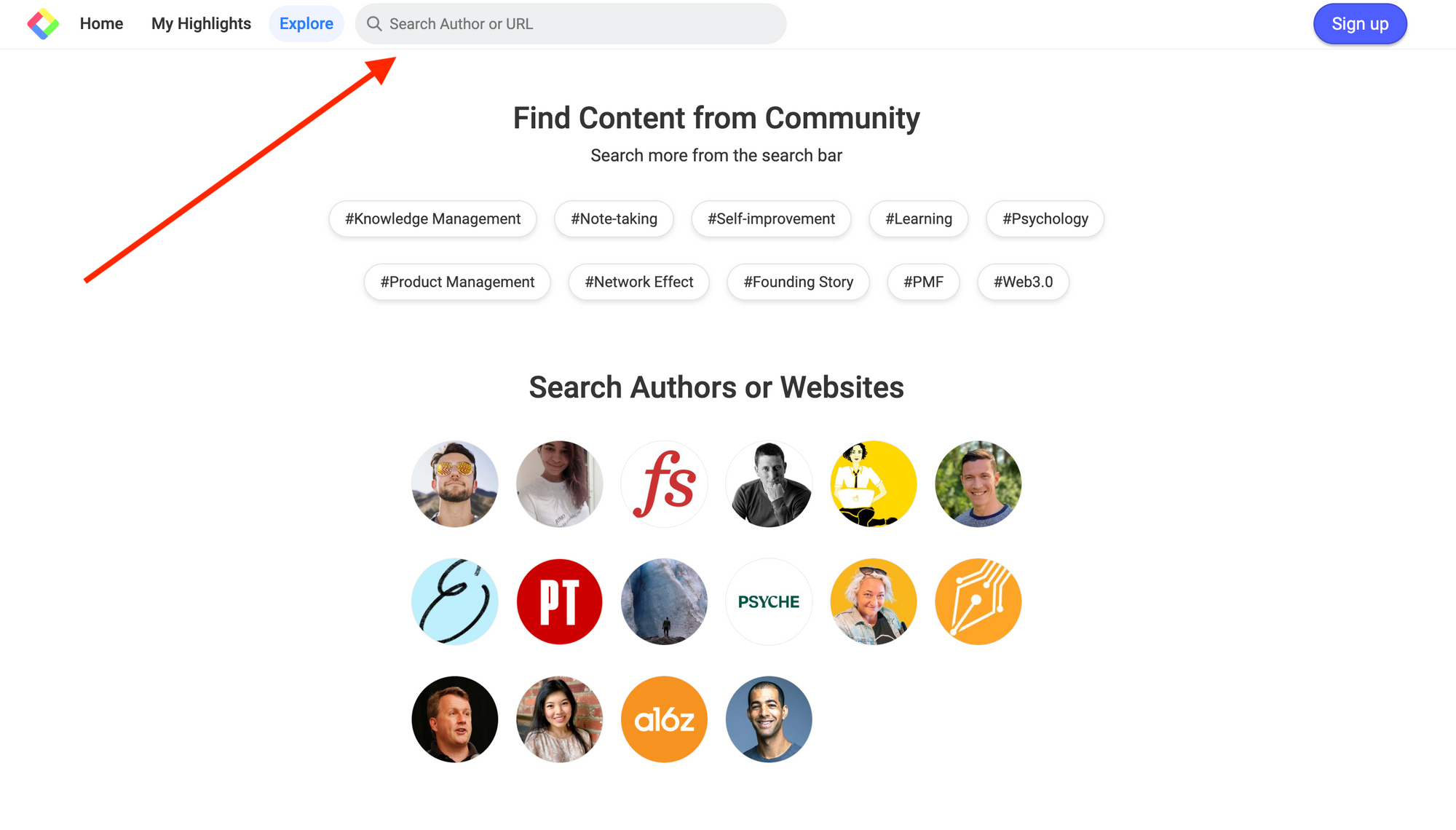
If your article is read and highlighted by Glasp users, it shows up on the search result. So, please click it.

Then, you will see a page where all users' highlights are accumulated.
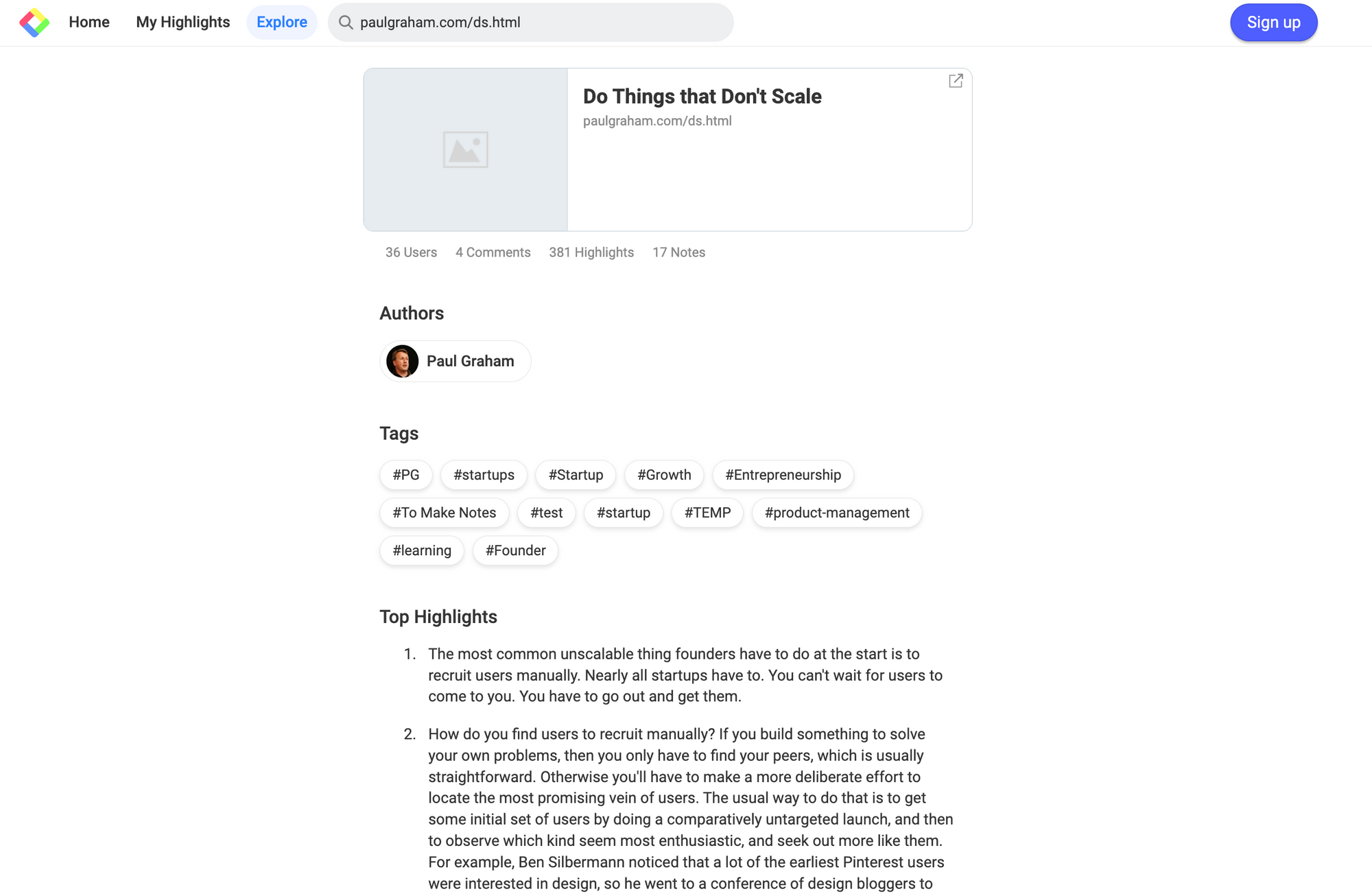
Also, you can see the top highlights and each user's highlights individually.
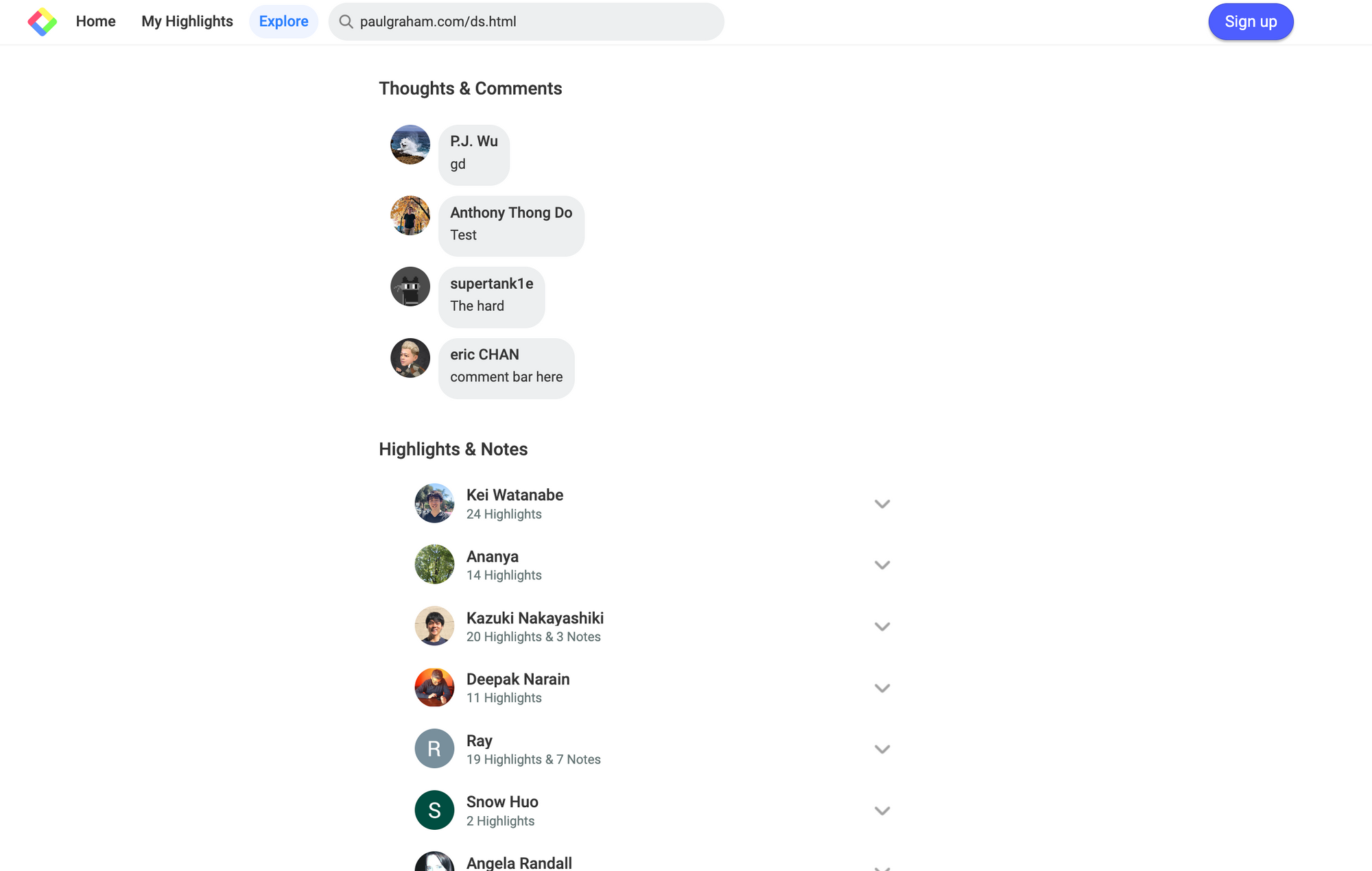
If you'd like to see their highlights in the original article, you can see them with the Chrome extension. To do it, please install the Glasp Chrome extension and open your article.
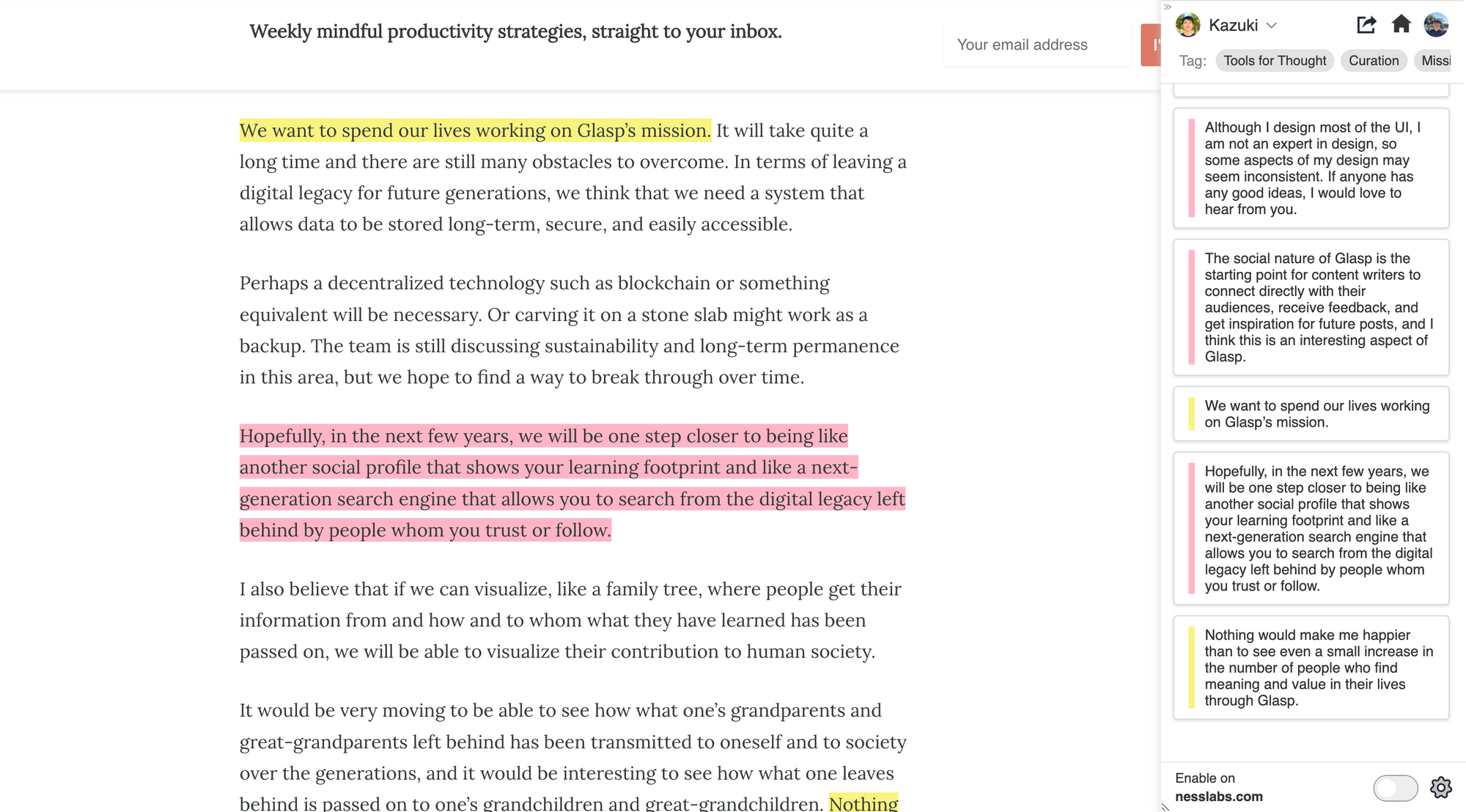
One of the other advantages of Glasp is that you can see what other articles your readers are reading. If you find interesting readers on Glasp, please go to their Glasp profile page by clicking their profile icon.
Below is Kei's profile page on Glasp. You can see his reading articles on nesslabs.com.
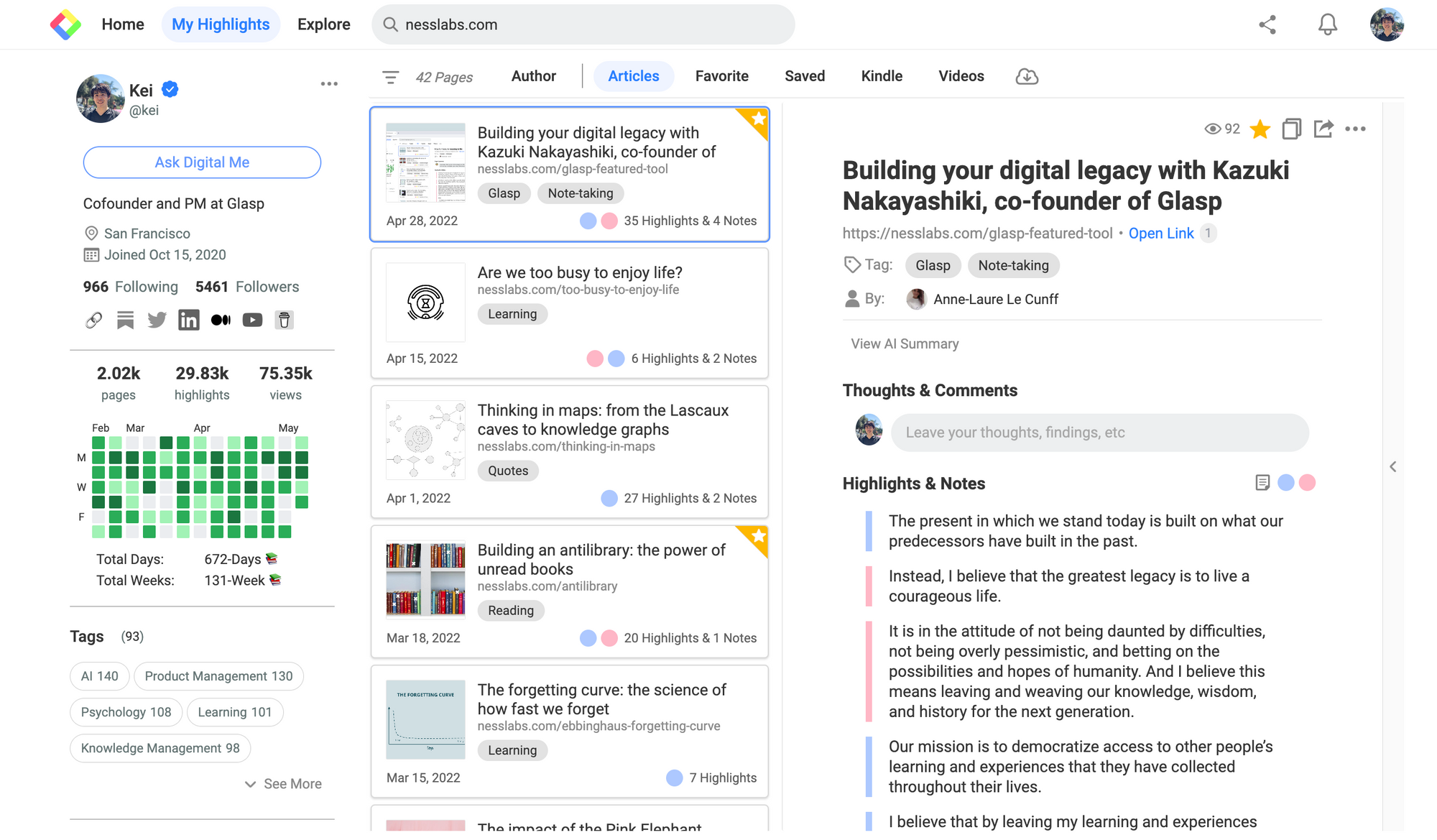
Analytics and metrics
Understanding reader behavior through analytics and metrics can be immensely valuable for writers seeking to enhance reader resonance. The wealth of data available can offer insights into your readers' habits, preferences, and engagement levels with your content. Here's how you can use it to predict readers' resonance.
Time Spent on Page: This metric reveals how long, on average, readers spend on your webpage. A longer time spent can indicate that readers are engaging deeply with your content. If the time spent on the page is short, it might mean that readers are not finding the content relevant or engaging enough. Keep in mind that this metric should be interpreted in context - for example, a short blog post will naturally have a shorter average time on the page compared to a long-form article.
Bounce Rate: The bounce rate indicates the percentage of visitors who navigate away from your website after viewing only one page. A high bounce rate might suggest that readers are not finding your content interesting enough to explore further, or that the page they land on does not meet their expectations. If a specific article has a high bounce rate, consider revising it to better hold your readers' interest.
Heatmaps: Heatmap tools, like Hotjar and Crazy Egg, visually represent where users have clicked, scrolled, and moved their mouse on your webpage. This can help you understand which sections of your articles are attracting the most attention and which parts are being overlooked. For example, if readers are not scrolling down to the end of your articles, you might need to make your introduction more engaging or break up long sections of text to keep their interest.
Scroll Depth: This metric shows how far down a page a user scrolls and can be a good indicator of how much of your content is being read. If readers are only scrolling through the first half of your articles, consider how you can make your content more compelling to keep them reading to the end.
Engagement Metrics: Engagement metrics, such as likes, comments, shares, and return visits, can provide insights into how readers are interacting with your content. High engagement rates typically indicate that your content is resonating with your audience.
As you may have noticed after reading this so far, Heatmaps and Scroll Depth are useful to see where readers actually resonated/thought it was necessary for Analytics and Metrics. These methods allow you to guess which readers read which parts/chapters. However, you should be careful about other methods because they measure the engagement of the whole page.
Before You Leave
Thank you for reading the article! Hope this article helps you understand the ways of seeing readers' resonance. If you have any questions, please look at FAQ or message us.
Please look at the tutorials and use-case interviews below for reference.
- How to get transcripts of the YouTube Video
- How to import Kindle highlights & notes into Glasp & export them as a file
- Glasp and Professional Technical Writer Carlos Franco
- How to use Glasp in a team with Darren and Amanda
See you next time,
Glasp team
—
